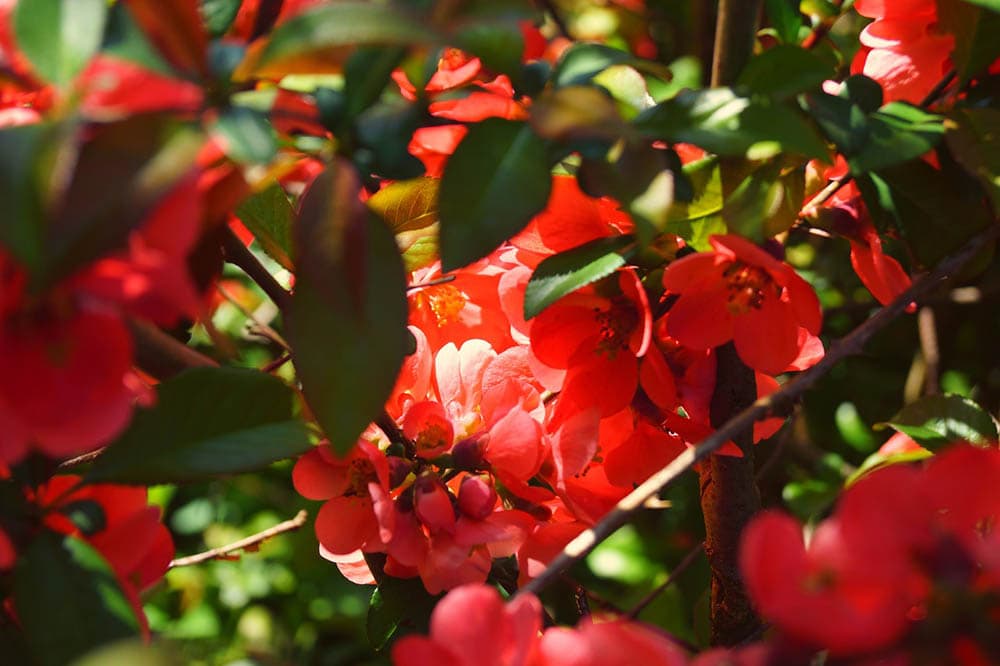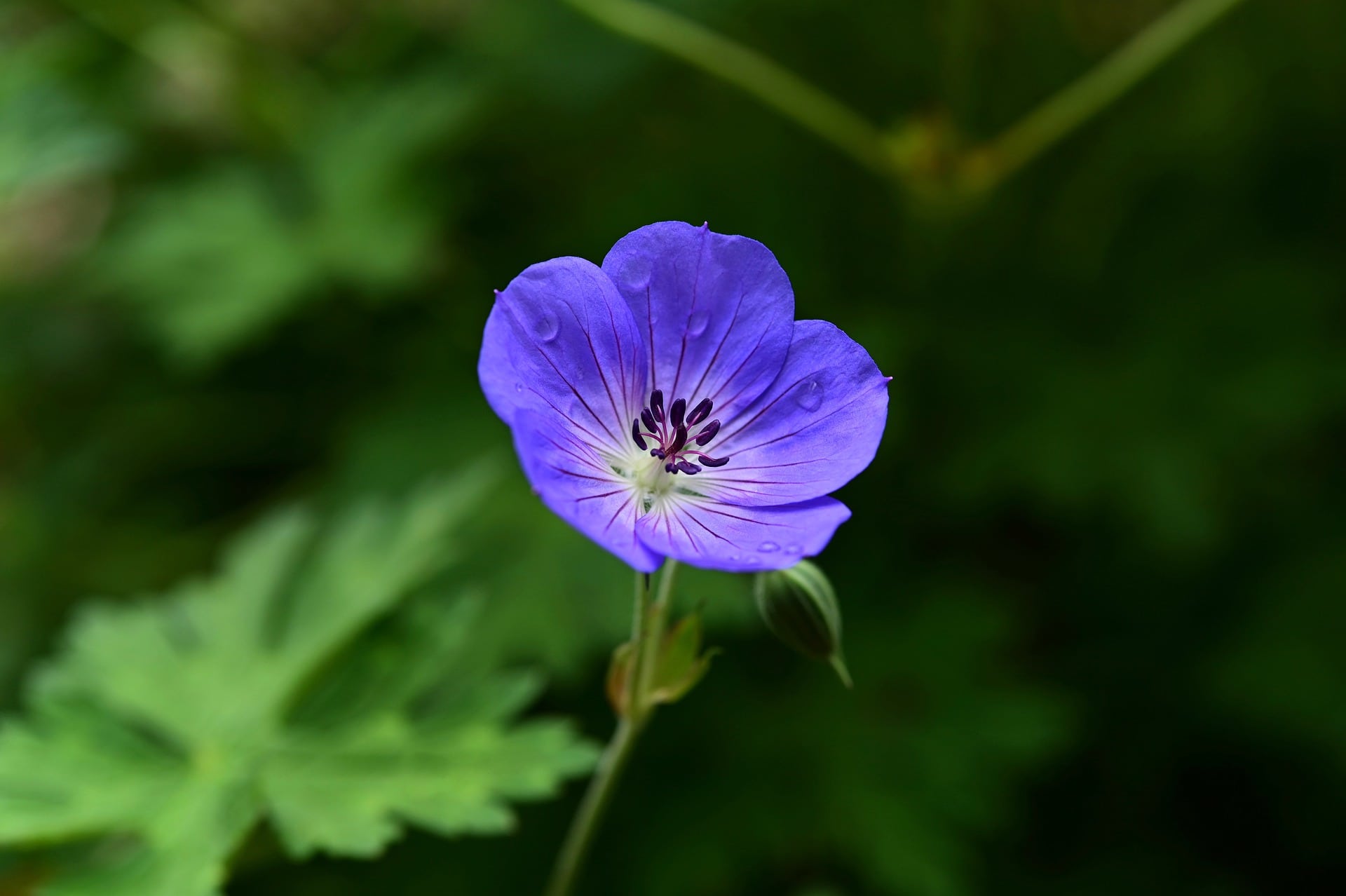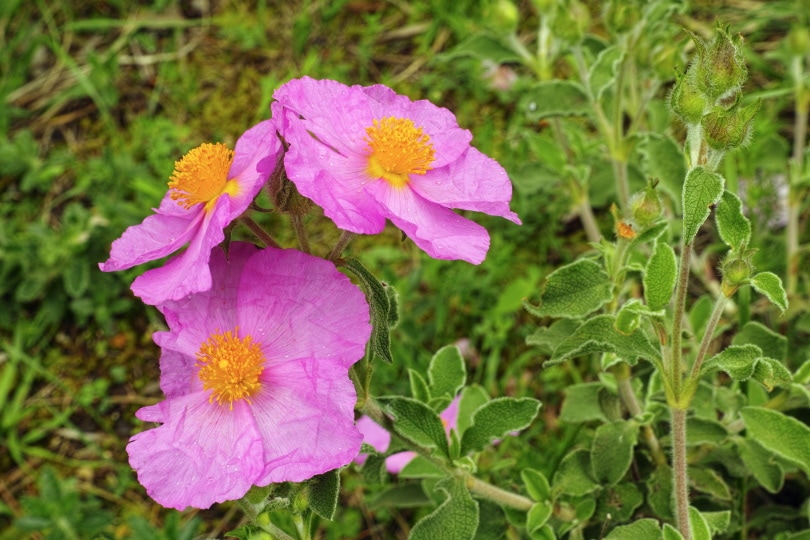7 Best Plants to Grow in Texas (With Pictures)
-
Codee Chessher
- Last updated:

Gardening is a worthwhile pastime to brighten up both your yard and to improve mental wellbeing. Texas sometimes has an unforgiving climate, so it’s worth it to check out what types of plants thrive in the midst of its fierce heat.
Let’s take a closer look at which plants are your best option to grow that will still thrive under the beating Texan sun. Here we go!
 The 7 Plants to Grow in Texas
The 7 Plants to Grow in Texas
1. Azaleas

| USDA Hardiness Zones | 6-9 |
| Water Requirements | Regular (1” per week) |
| Preferred Soil | Moist soil, pH 4.5-5.5 |
Azaleas are tough little plants, and many people love them for their bright, vibrant colors. They grow well in most parts of Texas, and even in 100+ degree summers, they don’t wilt. Azaleas do well with lots of humidity, which many parts of Texas enjoy, and acidic soil.
Despite many areas in Texas having alkaline soil, azaleas can flourish if care is taken to adjust the soil pH. Azaleas generally don’t do well in the winter, and it’s recommended to transplant them to pots and bring them indoors if the weather drops below freezing in the winter. Given the relative rarity of subzero temperatures, you can bring them back outside in just a few short months.
2. Firebrush

| USDA Hardiness Zones | 8-11 |
| Water Requirements | Sparse (0.5” per week once mature) |
| Preferred Soil | Any soil, pH 5.5-8.2 |
Firebrush is a beautiful shrub perennial that attracts hummingbirds to your yard, and it’s practical to grow any time of year. What makes them especially suited to Texas is their resistance to drought—after they reach maturity, they require very little water to thrive. Even better, they’re not picky about soil pH and even grow in clay. The only caveat is that they need good drainage.
With droughts becoming a dangerous new norm in the Texas summertime, firebrush is a bold new choice to populate your garden. In the fall, the plant turns a gorgeous blood color.
3. Geraniums

| USDA Hardiness Zones | 9-12 |
| Water Requirements | Regular (1” per week) |
| Preferred Soil | Loose soil, pH 6.0-6.5 |
Geraniums don’t typically do well in hotter climates like Texas, but they can be a great flower to grow during the cooler spring and fall months. The trick with geraniums is that you have to monitor the sun they get. The sun gets too intense in the afternoon to keep them in direct sunlight all day, so plant them accordingly or use pots.
Geraniums will bloom all the way into the summer as long as you take care to monitor how much sunlight they get. Areas that get moderate or dappled shade all day long are perhaps the best, or areas with southern sun exposure.
4. Rosemary

| USDA Hardiness Zones | 7-10 |
| Water Requirements | Regular (1” per week) |
| Preferred Soil | Loamy soil, pH 6.0-7.0 |
While many plants do poorly in the dry Texas heat, rosemary does very well. This evergreen shrub commonly used as an herb can grow in even the rockiest soil as long as you provide it with adequate drainage. Rosemary is versatile and can be grown outdoors or kept indoors in planters.
Rosemary demands a precise balance of moist soil, but flooding it is a quick way to drown it. Simply keep an eye on how much rainfall the plant gets during the spring, and you’ll be fine growing it anywhere in Texas.
5. Rock Rose

| USDA Hardiness Zones | 8-11 |
| Water Requirements | Sparse (0.5” per week) |
| Preferred Soil | Any well-drained soil, pH 5.5-7.5 |
As showy as plants get, rock rose lives up to its name and blooms in the most unforgiving conditions Texas has to throw at it. Its blooms range from light hibiscus to a deep rose color, and it’s beloved as both a show flower and pollinator alike.
It shouldn’t come as a wonder why rock roses do well in Texas, either, because it’s actually native to many eastern areas in the state. Grow rock rose shrubs anywhere, even rocky soil, but be prepared to make some amendments to the soil to make up for rocky soil’s poor nutrient levels.
6. Texas Sage

| USDA Hardiness Zones | 8-11 |
| Water Requirements | Sparse (0.5” per week) |
| Preferred Soil | Any well-drained soil, pH 6.5-8.5 |
Texas sage is known throughout southeastern Texas for its tendency to suddenly bloom when humidity rises. This perennial shrub is very low maintenance and requires little watering from you, fully able to subsist off rainfall alone. In situations of extreme drought, though, you may have to break out a watering can and spray it every two or three weeks.
Texas sage can grow as tall as 5 feet, making it ideal for either the yard, garden or as an accent planter on the porch. In some circles, the plant is made into a mildly sedating tea once its blooms are fully yellow or red.
7. Lantana

| USDA Hardiness Zones | 8-11 |
| Water Requirements | Regular (1” per week) |
| Preferred Soil | Sandy soil, pH 6.5-7.5 |
Lantana is a great way to add some bold color to your garden and attract various pollinators like butterflies and bees. These versatile plants come in many colors like bright red, pink, orange, and yellow. Lantana prefers full sun and soil that lets it fully drain, like many gravel or sandy soils. For better spring growth, regularly shear to encourage the plant to bloom further.
Lantana may attract bugs, but it’s generally pest-resistant. Deer and other vermin tend to stay away from them. Lantana only needs to be watered about once a week, or whenever you notice the flowers begin to visibly wilt. Watering when it appears to wilt will help the flowers seem to perk up somewhat for a few days.
Featured Image Credit: MabelAmber, Pixabay
Contents
 The 7 Plants to Grow in Texas
The 7 Plants to Grow in Texas